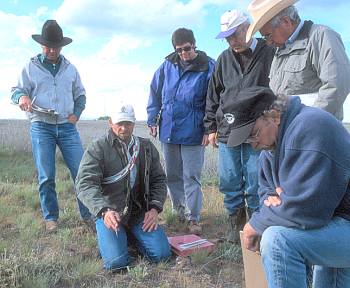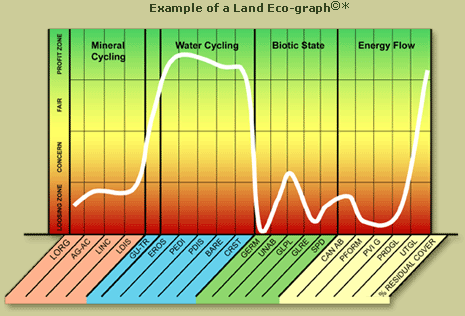by Peter Donovan
Charley Orchard grew up in Wyoming, a fourth-generation rancher. After he took his first Holistic Management course, he tried to bring it back to his family operation. Success was pretty limited at first. "What do you do when you don't know what to do? You go back to school."
At Montana State in Bozeman with Cliff Montagne, Charley did some research on ranchers who actually did some monitoring of their rangelands. Of the Holistic Management practitioners, 60 percent did some form of monitoring, versus less than 1 percent of ranchers across Montana. But most who monitored did it because they were supposed to, had little understanding of what the numbers meant, and were not able to apply the data in management decisions.
According to a National Research Council report in 1994, it is impossible, with current methods and data, to determine whether federal or nonfederal rangelands are improving or degrading. They recommended an approach based on multiple indicators of basic ecosystem processes. Orchard developed his Land EKG method in response. So far he has trained 500 people.
Peter Donovan  Rob Acheson, Charley Orchard, Elyse Benson, Demetrio Vasquez, Don Nelson, and Tim Westfall look at (overrrested?) native bunchgrass behind the Ramada Inn at the Spokane Airport. In May 2002, Charley Orchard taught his Land EKG rangeland monitoring method to participants in Don Nelson's Multispecies Grazing training project funded by USDA-SARE.
|
In these days of carbon sequestration payments, legal battles with anti-grazing groups, and increasing conflict over ecosystem degradation, monitoring is needed to guide management, Charley said. The city of Wichita, Kansas is paying a dollar an acre a month for improved management on the municipal water catchment.
"My intent is to take the intimidation out of monitoring." The basic Land EKG method sets up 200-foot permanent transects ("don't set them all up the first year") and uses four fixed points. Most ranchers should be able to do basic monitoring with about 1 percent of their time, Charley estimates. With practice, it takes about 20 minutes to record the data at each point.
At each of the four points, photographs are taken, and 5 square feet of soil surface bounded by a cable hoop is examined for the basic ecosystem processes:
- Mineral cycle: diversity of living organisms, the abundance, age, and incorporation of litter
- Water cycle: gullies, erosion, pedestaling, density of plant cover, bare ground, crusting
- Plant community: germination sites, undesirable and goal plants, goal recruits, plant diversity
- Energy flow: plant canopy cover, plant form, vigor, and production and utilization factors.
Charley remarked on the tendency for people to protect their monitoring transects from fire, new grazing regimes, or management changes. "That's not the idea. This is a tool to guide your management."
 The Land EKG field forms,
materials, and eco-graph are protected by U.S. copyright laws. |
Land EKG website. The mission of Land EKG is to help land managers optimize solar profit by creating healthy soil systems with diverse biological communities.
Updated 5 September 2002